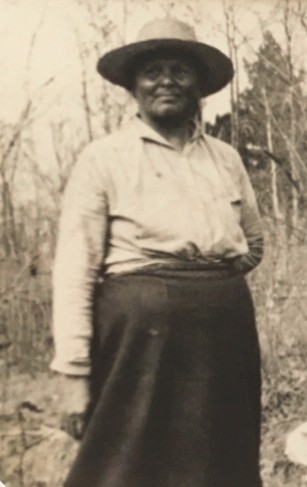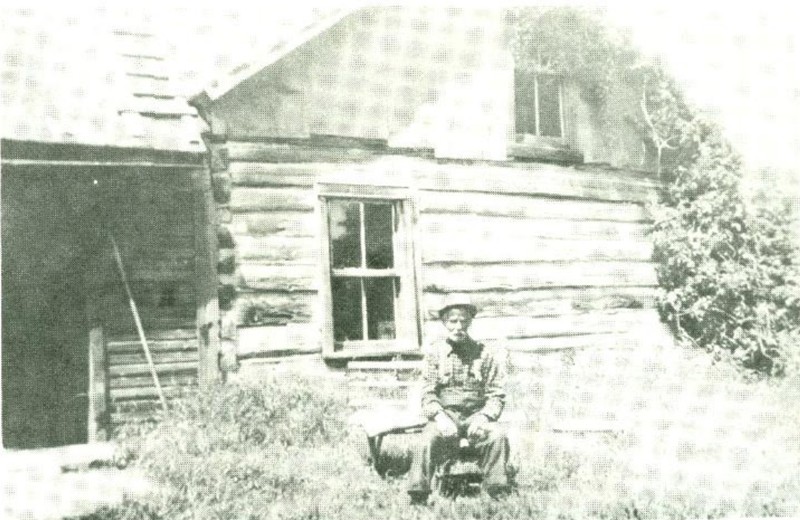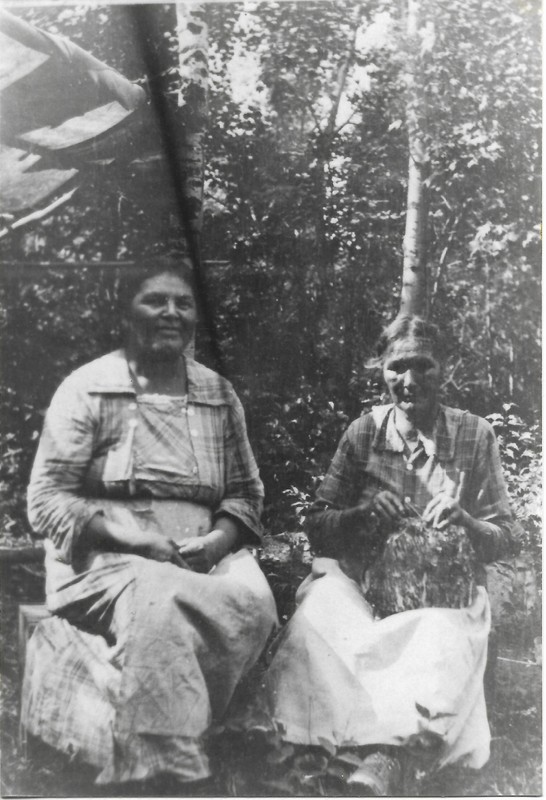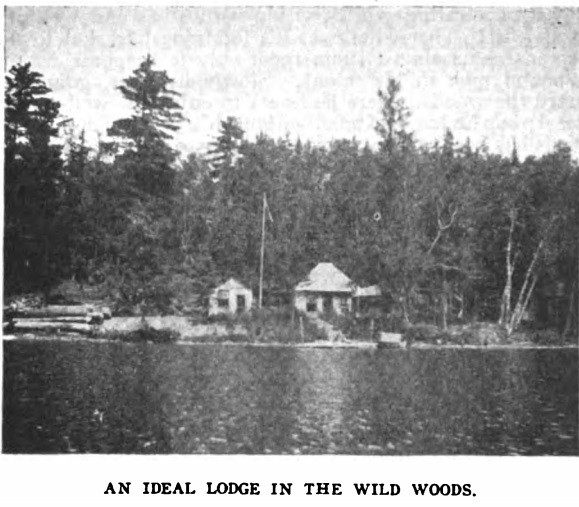Site of Peter Vance's Homestead
Introduction
Text-to-speech Audio
Peter Vance and his Ojibwe wife Sarah were among the first pioneer families to settle in what ultimately became Manitowish Waters. Changing the name of Dam Lake to Vance Lake, honors the site of their homestead and their historic contributions. Peter Vance claimed to have traveled up the Chippewa River in 1884 from Menominee, Wisconsin to the Manitowish chain of lakes. Peter Vance worked as a timber cruiser, trapper, guide and operated an early lodge until 1903. Sarah Vance maintained strong connections to her Ojibwe heritage and prove to be a strong partner for Peter. She was noted for sharing Ojibwe culture. Local residents and visitors were eager to buy her traditional Ojibwe goods.
To view the site of the Vance Homestead, the dock in front of Angler's restaurant provides a great view from afar. Those who wish a closer view should put in at the canoe landing below the Pea Patch, and paddle into Vance Lake. The site of Peter and Sarah Vance's homestead is located on private property. Private property should be respected by all travelers to Vance Lake.
Images
Sarah Vance

Peter Vance at his Cabin on Vance Lake

Sarah Vance and Mary King making traditional Ojibwe goods

Peter and Sarah Vance's Lodge called the River Inn that burned down in 1903

Backstory and Context
Text-to-speech Audio
Beginning in the fur trade era, a practice of intermarriage between European traders and Ojibwe women developed. It started as a relationship to bind the economic interests among the two diverse cultures. After the regional collapse of the American Fur Company in the 1840s, trading continued in a different form, but the intermarriage tradition remained. In Manitowish Waters several pioneer families continued this tradition. Sarah Vance, an early Manitowish Waters pioneer, helped shape our community. She was noted for sharing Ojibwe culture. Local residents and visitors sought her Ojibwe traditional goods. Charles Smith Jr. recalled, "Dad would go over there, and we'd put our foot down and Sarah would put a line around it and she'd make us all moccasins. We had moccasins all the time." During a 1991 interview, Smith shared more about Peter and Sarah when asked if the Vances had a farm: "No, he didn't have much acreage back there if I remember and he did have the horses. Sarah got them for him and so forth and there would always be a little hay. I don't recall much of that, but he always had his deer because Sarah always had skins to make us moccasins every spring. She made the old sweetgrass baskets. Sweetgrass isn't around here anymore. You have to go way out into the West to find that old sweetgrass...It was the nicest smelling thing, and we got that nice basket made. You could smell that sweetness to it, really nice." Peter and Sarah Vance witnessed the Manitowish chain's evolution from a remote wilderness to a thriving Northwoods community.
Peter Vance was also beloved by folks who settled in the Northwoods. His expertise and adventures made him a Northwoods legend. Fortunately, Paul Tarbel, writer for Forest and Steam Magazine, was a client of Vance and documented an 1899 fall hunting trip. Tarbell brought a city friend on the trip who qualified as a tenderfoot or greenhorn hunter. Vance and his good friend Joe LaVigine guided Tarbell's party on an amazing adventure. The Manitowish Waters Historical Society has recorded Tarbell's articles, In the Heart of the Wild Woods Parts I and II, as podcasts. Each of these podcasts are linked to this Clio entry for you follow the adventures and antics of Northwoods guides and their clients.
Vance was extremely active into his later years. Charles Smith Jr. documented: "Pete was right in the middle of that, and he poled up the river from Manitowish up to his place on Dam Lake, now Vance Lake, which I'm pleased to see. That's upstream all the way and he was in his 80s then. He was quite a guy." Charles Smith Sr. and Vance collaborated on a sportsman film of Manitowish River: "Ed Taylor, the sports editor of the Chicago Daily News and Dad and Pete Vance, did a movie of the Manitowish River. No, this was the early 1920s because I saw it play in 1924 and 1925 at the Ashland Theatre." Sadly, when Smith tried to retrieve the films, he learned that the movie was thrown out just days before.
As Vance aged, he continued guiding, and loved maintaining his garden on Vance Lake.
Sources
Smith Jr., Charles . Charles "Bud" Smith Jr. interview of the Smith family's long history in Manitowish Waters., Manitowish Waters Historical Society-PastPerfect .1991. Accessed December 23rd, 2022. https://mwhistory.pastperfectonline.com/Archive/4A9BD0F9-C938-40A1-8C08-054379491349.
Tarbell, Paul. In the Heart of the Wild Woods Part I. Forest and Stream. May 26th, 1900.
Tarbell, Paul. In the Heart of the Wild Woods Part II. Forest and Stream . June 16th, 1900.
Manitowish Waters Historical Society
Manitowish Waters Historical Society
Manitowish Waters Historical Society
Manitowish Waters Historical Society
